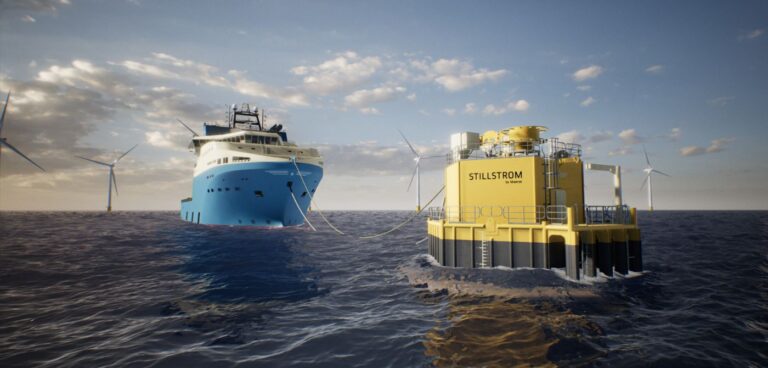Newly launched offshore charging company Stillstrom has signed a memorandum of understanding (MoU) with the Port of Aberdeen to conduct a collaborative feasibility study into an offshore renewable charging hub. The duo aims to significantly reduce the emissions from vessels on standby outside the port.
The clean-tech concept consists of a platform for vessels to use electricity from either offshore wind or grid-energy, negating the need for polluting fossil-fueled engines to be idling when near the Port of Aberdeen. The concept will also enable the charging of battery packs on certain vessels.
The feasibility study is scheduled to run until the end of 2022 and will develop a roadmap for introducing offshore charging infrastructure at the port. As part of the study the duo will analyze the benefits, use cases, fundamental requirements, economics and stake-holder involvement.
Each year more than 6,000 vessels visit or anchor outside the Port of Aberdeen, making it one of the UK’s busiest ports. Aberdeen has a ‘Green Port’ strategy which explores a wide range of emissions reduction opportunities including quayside electrification, alternative fuels, lower carbon power supplies and sustainable waste management.
“Innovative thinking and practices are crucial if we’re to achieve a green maritime industry,” said Bob Sanguinetti, chief executive, Port of Aberdeen. “We look forward to working with Stillstrom to develop low-carbon power supply and reduce emissions from vessels on standby outside our port. Pioneering projects, like renewable offshore charging, will help to make our vision of becoming Scotland’s premier net zero port a reality.”
“We are extremely pleased that Port of Aberdeen and Stillstrom have entered into this collaborative MoU,” added Kristian Jorgensen, CEO, Stillstrom. “The feasibility study we will undergo with Port of Aberdeen is a cornerstone in our go-to-market strategy for our ‘Ports & Hub’ segment. Together with Port of Aberdeen as a close partner, we will be able to map and show the true value of utilizing electricity for idling vessels – which we expect will not only support the journey toward a net-zero ocean economy and a better near coastal environment, but also [be] an economically attractive solution for vessel owners to utilize.”



